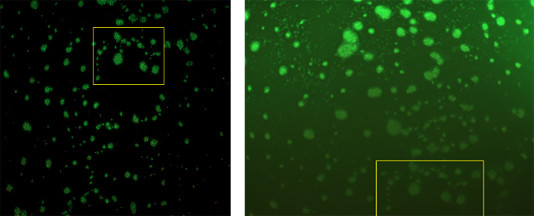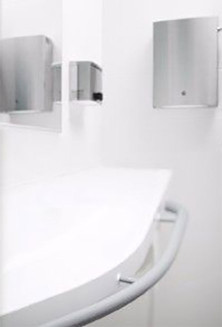New test results of antimicrobial materials against bacteria and viruses

In addition to good cleaning routines, the right material choices promote the hygiene environment. Antimicrobial materials reduce the number of microbes on surfaces even before cleaning. Morover, the proficiency of antimicrobial materials on viruses has been studied and positive results provide an indication of their efficacy against a strain of coronavirus family.
Korpinen's bathroom products are antimicrobial and their effectiveness is based on the use of BioCote® silver ion technology in the materials. Antimicrobial materials have been tested to effectively eliminate several bacteria, mold and fungi. The efficiency of antimicrobial materials on viruses has also been studied.
Antiviral testing
Previously, Biocote® had obtained studies of the H1N1 swine flu virus as a local university study and received a positive result on the effectiveness of BioCote® technology against this virus.
In order to confirm further viral efficacy of BioCote® technology, BioCote® commissioned antiviral testing through a third-party laboratory using a BioCote® treated product against a strain of the coronavirus family. In this particular case, the tests were done with feline coronavirus, strain Munich to obtain additional information of the effectiveness. After testing to the BS ISO 21702:2019 standard, the polypropylene containing BioCote® technology was proven effective against feline coronavirus, strain Munich, with a reduction of 90% in 2 hours.
This data does not show efficacy against the current pandemic strain of SARS-CoV-2. To confirm whether the virulence properties of SARS-CoV-2 (COVID-19) are affected by BioCote® technology, the testing will need to be repeated on the actual SARS-CoV-2 (COVID-19) strain. The Centers for Disease Control and Prevention (CDC) have categorised the virus at biohazard level 3 and above, meaning the SARS-CoV-2 (COVID-19) virus will not be available for public commercial testing at this point in the pandemic.
Bacterial testing
The latest impact study was commissioned through the laboratory analytics department of Metropolia University of Applied Sciences. The study was performed using fluorescence microscopy, in which the measurement method was based on the use of chemical dye-absorbing compounds. These were used to locate living and dead bacteria on the surfaces to be examined. Two dyes were used in the study, one of which penetrated live Staphyloccus aureus bacteria through an intact cell wall, appearing green. In contrast, the red color penetrated the dead bacterium with a broken cell wall. The comparison was made with an antimicrobial lacquer surface and an untreated glass surface.
The study showed that on the antimicrobial lacquer surface, 99.9% of the bacteria died within 50 minutes, and on the untreated surface, there had been no reduction in the number of bacteria within 20 minutes.

Photo 1 Live and dead Staphyloccus aureus bacteria after 4 min and 50 min on the antimicrobial surface.

Photo 2 Live and dead Staphyloccus aureus bacteria after 0 min and 20 min on untreated surface.
The authors of the study were Metropolia's laboratory analysis students Henri Holmberg and Eero Jukarainen.
 Did you know that microbes can easily survive on stainless steel surfaces?
Did you know that microbes can easily survive on stainless steel surfaces?
On our antimicrobial surfaces, the removal of microbes from the surfaces begins immediately eliminating almost 90% of the microbes only in 15 minutes
Korpinen's bathroom furniture, paper and soap dispensers, toilet paper dispensers and trush bins are made of antimicrobial materials.
Find out more about our products here.
Check out the study on the hygiene of copper and steel surfaces
Read more about complete HygTech hygiene concept.
Read more about IHMEC indoor hygiene - Breaking the Infection Chain